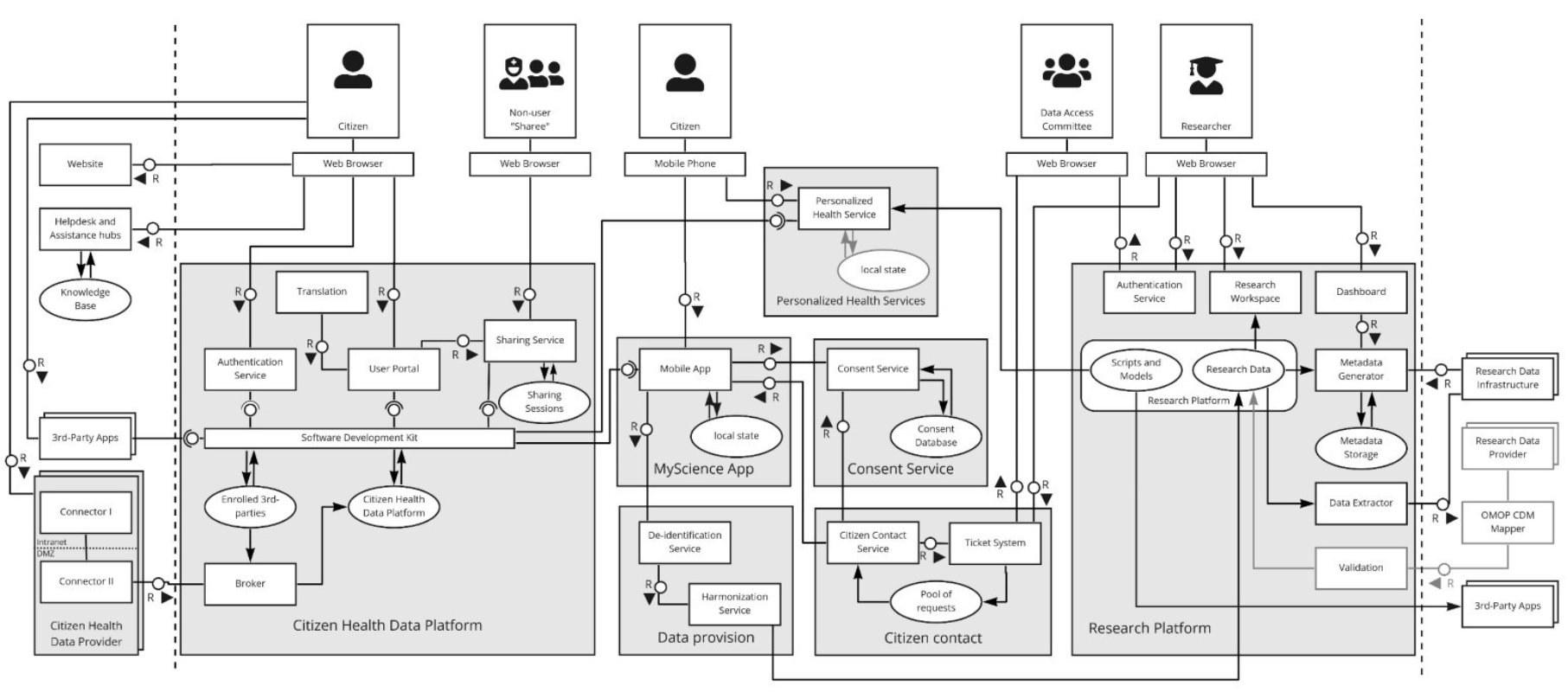Dieser Inhalt ist nur auf Englisch verfügbar.
The high-level architecture provides an abstract description of the system from an architectural view. The system is broken down into subsystems and modules. It captures the interaction between the main building blocks, and ensures that the user journeys discussed and agreed between consortium partners, are addressed.
For the elaboration of the high-level architecture, the Technical Architecture Modelling notation, an easy-to-use industry standard for describing architectures (SAP, 2019), is used. This notation contains: a) users, b) components, and c) connections between these. The following conventions are used in the diagram:
- Components are represented in boxes:
- Boxes with square corners represent active components, i.e. those that can perform an action, and are typically stateless.
- Boxes with rounded corners represent passive components, which means storage elements whose main task is to make information persistent.
- Connections between users and active components that represent a request. These can include the direction of the call or invocation.
- Connections between components themselves can be of two types:
- Use of an interface (provided or required)
- Read or write access, or both (to a passive component)
The components are described below.

References
SAP, (2019). Block Diagrams (TAM). [online]. Available at: https://help.sap.com/viewer/1cc460ad80f446e6a9d19303919ee269/16.6.6/en-US/c818d7ae6e1b10148b20d97bb6f5a04c.html. [Accessed 11 Nov. 2019].